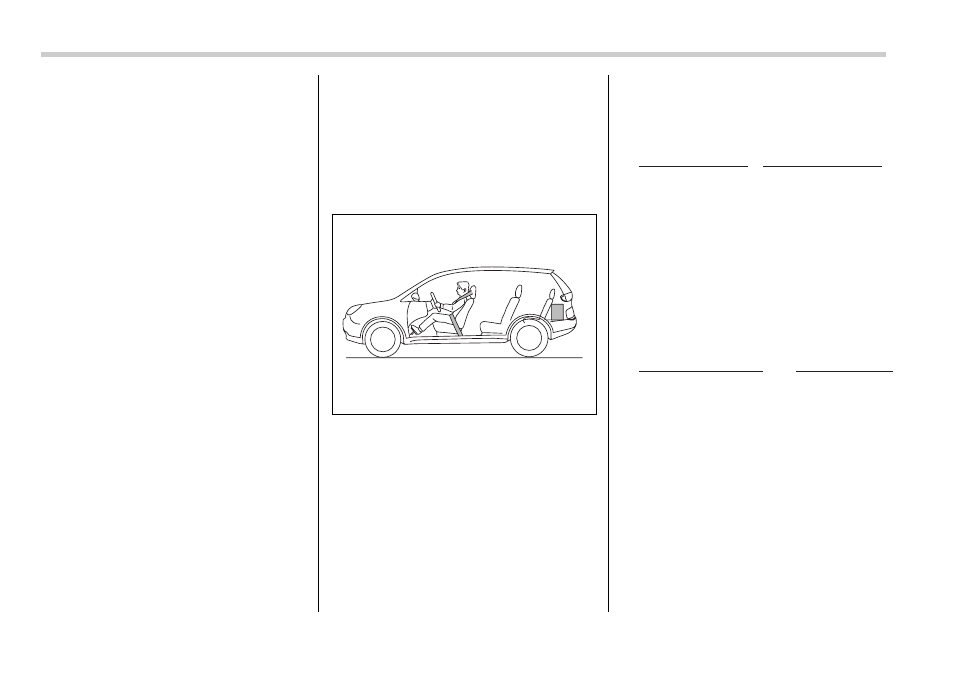Subaru 2006 B9 Tribeca User Manual
Page 361

13-8
Consumer information and Reporting safety defects
Vehicle load limit – how to de-
termine
The load capacity of your vehicle is
determined by weight, not by avail-
able cargo space. The load limit of
your vehicle is shown on the vehicle
placard attached to the driver’s side
B-pillar. Locate the statement “The
combined weight of occupants and
cargo should never exceed XXX kg or
XXX lbs” on your vehicle’s placard.
The vehicle placard also shows seat-
ing capacity of your vehicle.
The total load capacity includes the
total weight of driver and all passen-
gers and their belongings, any cargo,
any optional equipment such as a
trailer hitch, roof rack or bike carrier,
etc., and the tongue load of a trailer.
Therefore cargo capacity can be cal-
culated by the following method.
Cargo capacity = Load limit – (total
weight of occupants + total weight of
optional equipment + tongue load of a
trailer (if applicable))
For towing capacity information and
weight limits, refer to “Trailer towing”
in chapter 8.
T
Calculating total and load capac-
ities varying seating configura-
tions
Calculate the available load capacity
as shown in the following examples:
Example 1A
Vehicle capacity weight of the vehicle
is 1,157 lbs (525 kg), which is indicat-
ed on the vehicle placard with the
statement “The combined weight of
occupants and cargo should never
exceed 525 kg or 1,157 lbs”.
For example, if the vehicle has one
occupant weighing 154 lbs (70 kg)
plus cargo weighing 1,212 lbs (550
kg).
1. Calculate the total weight.
2. Calculate the available load capac-
ity by subtracting the total weight from
the vehicle capacity weight of 800 lbs
(363 kg).
3. The result of step 2 shows that a
further 121 lbs (55 kg) of cargo can be
carried.
D00101
Total weight
= 154 lbs (70 kg) + 882 lbs (400 kg)
= 1,036 lbs (470 kg)
(Occupant)
(Cargo)
Available Load Capacity
(Vehicle
capacity weight)
(Total weight)
= 121 lbs (55 kg)
1,157 lbs
(525 kg)
1,036 lbs
(470 kg)
–
=
